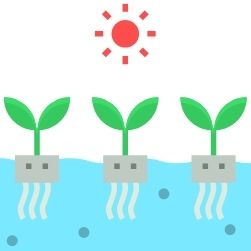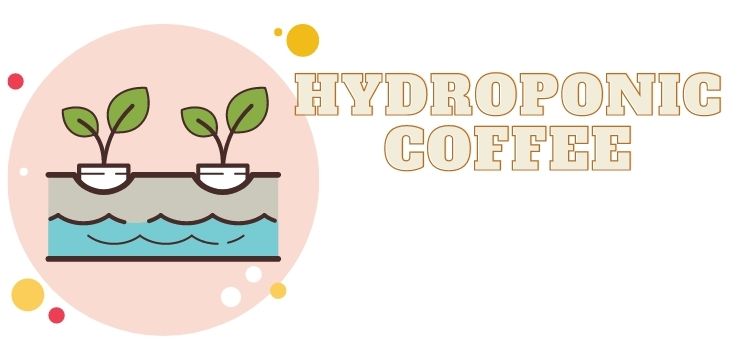What Exactly is Hydroponics?
Hydroponics is a method of planting vegetables that do not involve the use of soil. The plant’s roots are hung in a bath of hydroponic solution. Hydroponic coffee growing is a relatively new trend that is capturing the imagination of coffee lovers. It relies on the constant supply of water to keep the roots moist. The hydroponic hydration method of growing coffee is a very sustainable growth process and healthy for the environment as well!
There are 5 elements that are essential for hydroponic growth and they are:
- – Water
- – Oxygen
- – Nutrients
- – Light Source
- – Support for the roots
Best Hydroponics Starter Kits
[amazon table=”1919″]
The Advantages Of Hydroponics Over Soil Growing
The hydroponic growing method is a lot more sustainable and healthy for the environment. It uses less water, fewer nutrients, and most importantly, it does not disturb the soil composition thus preserving its quality.
Many people also find hydroponic hydration beneficial because it does not involve fertilizers or pesticides that could harm the soil and contaminate the local groundwater in an area where coffee is grown conventionally. In fact, it often results in a more nutrient-rich taste as well! That’s why many large companies are beginning to embrace hydroponic cultivation – because it tastes better and is good for the environment too!

The beauty of hydroponic growing is it can be done anywhere, even in the desert It is also easy to clean and maintain systems that need constant food, hydration, and light. This makes hydroponic growing a lot less labor-intensive than soil planting.
Yields from hydroponic gardening can also be greater because hydroponic hydration supplies water all the time, and roots can easily get to it. Plants in hydroponics do not have to expend energy to grow.
So Can I Grow Coffee Hydroponically?
Coffee is one of the most consumed beverages in the world. In fact, coffee consumption in the United States alone has increased by about 50% since 1998! With increased demand comes a greater need for supply, and the good news is that it is becoming the preferred method of growing coffee beans in many places and is also becoming very accessible for the home gardener.
However, hydroponic coffee-growing only makes sense if you consider the effect it has on the hydration of coffee. Conventional hydrated coffee uses about 17 liters of water to create one liter of hydrated coffee. If you include hydroponic hydrated coffee, only 6 liters of water are needed for every liter hydrated product.
How Hard is it to Start Growing Coffee Hydroponically?
To answer the question about how hard it is to start growing coffee hydroponically my answer is hydroponics hydration is not very difficult, but if you want to be successful with hydroponically grown coffee plants, it does take some effort.
The first thing you need is to decide which type of system you’d like to use because there are several types. Some common systems used for hydroponic hydration include the floating row system and, the deep water culture system.
Both hydroponic systems are easy to set up and maintain as well as clean, but each has its own unique advantages and disadvantages. For example, hydroponics row hydration is more efficient in terms of yield because plants are arranged tightly with large amounts of root surface area for uptake.
On the other hand, hydration in deep water culture is a lot more stable, as the plants are suspended above the hydroponic solution and supported by an inert medium like clay pebbles.
Both systems can be performed at home using DIY hydrometers or, if you’d rather not deal with hydrometers and pH levels, there are many kits for sale.
Another important consideration before hydroponic hydration is the size of your hydrated plant. For example, hydration would be more complicated with a large coffee plant compared to a tiny plant or plants that are not much bigger than houseplants.
Ultimately, you have to have the patience of a saint to be successful at growing coffee beans hydroponically as it can take between 3 and 5 years before you even see your first yield. Even then, the coffee cherries will be sparse, to begin with. Stick with it and enjoy the ride and eventually, you will reap what you sow (hydroponically speaking of course).
The Optimal Hydroponic Environmental Conditions and Nutrients
Here is a list of the 13 best nutrients needed for successful hydroponic growing:
- – Nitrogen
- – Potassium
- – Phosphorus
- – Calcium
- – Magnesium
- – Sulfur
- – Iron
- – Manganese
- – Copper
- – Zinc
- – Molybdenum
All of these nutrients are available in many great nutrient solution products on the market.
Hydroponic coffee does not require soil, but rather a hydroponics medium which is most often rock wool. Rock wool cubes are hydroponic growing containers that are used by farmers to grow hydroponic vegetables and hydroponic fruits but have recently been adapted to grow hydroponic coffee as well.
Once hydroponic coffee is grown, the leaves must be treated with a foliar spray of water and nutrients. This process increases both hydration and nutrient availability for the plant.
The optimal hydroponic environment creates an ideal pH level that allows the nutrients in hydroponics to dissolve into a solution that can then be absorbed by the roots of the plant—this helps to increase yield and keep fresh tasting coffee beans. An ideal PH range for growing coffee plants is a slightly acidic PH5.5 to a more neutral PH6.5. It is a good idea to keep an eye on PH levels of your water solution. A good investment is a decent PH tester like this one.
It is important that hydroponic coffee plants are given all of their necessary nutrients each time they are sprayed or fertilized, but it is also important for them to not have too many nutrients because this actually has negative effects on the taste of the final product.
The Ideal Temperature for Hydroponic Coffee Growing
Hydroponic coffee plants should be kept within a temperature range of 60 degrees Fahrenheit to 70 degrees Fahrenheit. If the hydroponic coffee is exposed to temperatures outside of this range, it will cause stress or even death for the plant. It is also important that hydroponics cannot become too cold because it can inhibit photosynthesis and actually halt growth completely.
The Ideal Hydroponic Light Conditions
Of course, natural sunlight is the best option if possible but the best light conditions for coffee plant growing is an 18 hour on and 6 hours off lighting cycle. This lighting schedule allows the plants to absorb the necessary amount of hydroponic nutrients in order to grow healthy, but not so much hydroponic light that it inhibits growth or damages the plant.
How To Begin Growing Hydroponic Coffee At Home
The best way to begin growing coffee at home using a hydroponic system is to start with pre-soaked (24 hours) coffee beans which are the seeds of coffee plants. If you plan to grow hydroponic coffee inside or in the winter months, we recommend starting hydroponic seeds around 8 weeks before the last frost and then placing hydroponics plants outdoors when temperatures reach 50 degrees Fahrenheit.
To create a seedling pot, simply cut a piece of rock wool into cubes using scissors and place each seed on top of one cube. Cover each seed with more hydroponic rock wool cubes until they are completely covered. When covering the seeds with rock wool, be sure not to push them down too hard because this can damage the root system of the growing plant.
Before transplanting newly grown hydroponically coffee plants into hydroponics pots, it is a good idea to grow the coffee plants for 3 weeks in an indoor system. This will acclimate hydroponic coffee plants to growing indoors before they are transplanted into hydroponics systems which may be more challenging and stressful for the coffee plant.
Once the coffee seedlings are large enough to be transplanted into hydroponics containers, any type of commercial pot or container will do. Plastic hydroponic buckets work great because they have a simple design and can be easily moved around. There are many options available to buy like these.
How Long Before I Can Harvest Coffee Beans and How Many Can I Expect?
You can expect your first harvest of coffee beans after around 5 years of growth but don’t expect much of a yield initially. You have to be patient because hydroponics coffee plants take several years to develop.
Once established, on average hydroponic coffee plants can produce between six and ten pounds of coffee per year. The more you care for your plant, the better it will grow. Patience is key when growing hydroponic coffee!
How Do You Know When It’s Time To Harvest Coffee Beans?
While hydroponics plants are ready to harvest three months after flowering begins, this time frame isn’t exact but rather only an estimate depending on the type of hydroponics plant being grown. For example, Arabica seedling plants need around 6 months before they are ready to be harvested whereas Robusta seed plants can be harvested after 3 months.
Conclusion
If you’re looking for a way to hydroponic grow coffee that is sustainable and healthy for the environment, then hydroponics may be just what you need! Growing hydroponic coffee has many benefits. It’s more environmentally friendly because there are no pesticides or chemicals being used in this method of growing coffee beans. Plus, hydro-coffee plants can produce up to 10 pounds per year which makes them very profitable as well.
